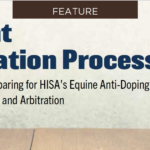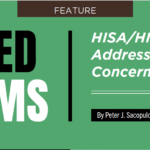Merz Aesthetics, Inc. And Merz Pharmaceuticals, LLC Commit To Full Remediation Compliance In Allergan Inc. Lawsuit
Full Compliance May Allow For Injunctive Relief After Specific Criteria Have Been Met
GREENSBORO, N.C., March 14, 2012 /PRNewswire/ — Following a final hearing that occurred yesterday with the Honorable Andrew J. Guilford, the judge presiding over a recently concluded bench trial which focused on a commercial dispute over trade secrets, Merz is providing additional details on the outcome of the case.
“We regret that this ruling will affect physicians and patients as we believe that access to quality FDA-approved treatment options, including XEOMIN® (incobotulinumtoxinA), is a cornerstone of the U.S. market,” said William D. Humphries, CEO of Merz, Inc. “It is critical at this juncture to clarify that this lawsuit, which is commercial in nature and focuses specifically on alleged trade secrets, did not call into question the quality of XEOMIN. As a globally successful pharmaceutical company, which has been under private ownership for over 100 years, Merz stands for high ethical standards and we regret that individual employees have violated our longstanding guidelines.”
Per the terms of the injunction order issued by Judge Guilford on March 9, 2012, Merz Pharmaceuticals, LLC and Merz Aesthetics, Inc. may seek to modify or terminate the provisions of portions of the injunction, including the limitations placed on sales of XEOMIN, on the grounds that they have satisfied the examination and remediation process.
Merz has confirmed to the judge that it is pursuing an expeditious and effective file examination and remediation process that will enable the Company to return quickly to business as usual, which includes the launch of XEOMIN in the facial aesthetic market.
Contrary to the suggestion that both companies have been barred from selling XEOMIN, Merz Pharmaceuticals, LLC will continue to sell XEOMIN for therapeutic uses, although it is restricted from selling to certain physicians in certain areas in the United States for the period of time specified in the injunction. These minor restrictions do not affect ongoing clinical study of XEOMIN in post-stroke spasticity and other indications.
XEOMIN is FDA approved for the treatment of cervical dystonia in adults, to decrease the severity of abnormal head position and neck pain in both botulinum toxin-naive and previously treated patients, and blepharospasm in adults who have been previously treated with Botox® (onabotulinumtoxinA). XEOMIN is also approved for the temporary improvement in the appearance of moderate to severe frown lines between the eyebrows (glabellar lines) in adults.
For more information about XEOMIN, please visit www.XEOMIN.com.
About XEOMIN
INDICATIONS AND USAGE
XEOMIN® (incobotulinumtoxinA) for injection, for intramuscular use, is indicated for the temporary improvement in the appearance of moderate to severe glabellar lines associated with corrugator and/or procerus muscle activity in adult patients.
XEOMIN should be administered no more frequently than every three months.
IMPORTANT SAFETY INFORMATION, INCLUDING BOXED WARNING
WARNING: DISTANT SPREAD OF TOXIN EFFECT
Postmarketing reports indicate that the effects of XEOMIN
(incobotulinumtoxinA) for injection, for intramuscular
use, and all botulinum toxin products may spread from
the area of injection to produce symptoms consistent
with botulinum toxin effects. These may include
asthenia, generalized muscle weakness, diplopia, blurred
vision, ptosis, dysphagia, dysphonia, dysarthria,
urinary incontinence and breathing difficulties. These
symptoms have been reported hours to weeks after
injection. Swallowing and breathing difficulties can be
life threatening and there have been reports of death.
The risk of symptoms is probably greatest in children
treated for spasticity but symptoms can also occur in
adults treated for spasticity and other conditions,
particularly in those patients who have underlying
conditions that would predispose them to these symptoms.
In unapproved uses, including spasticity in children
and adults, and in approved indications, cases of spread
of effect have been reported at doses comparable to
those used to treat cervical dystonia and at lower
doses.
———————————————————-
Please see Full Prescribing Information, including Medication Guide for more information.
CONTRAINDICATIONS
XEOMIN (incobotulinumtoxinA) for injection, for intramuscular use, is contraindicated in patients with a known hypersensitivity to the active substance botulinum toxin type A or to any of the components in the formulation and in the presence of infection at the proposed injection site(s). Use in patients with an infection at the injection site could lead to severe local or disseminated infection.
WARNINGS AND PRECAUTIONS
— The potency units of XEOMIN (incobotulinumtoxinA) for injection, for
intramuscular use, are not interchangeable with other preparations of
botulinum toxin products. Therefore, units of biological activity of
XEOMIN cannot be compared to or converted into units of any other
botulinum toxin products.
— Hypersensitivity reactions have been reported with botulinum toxin
products (anaphylaxis, serum sickness, urticaria, soft tissue edema, and
dyspnea). If serious and/or immediate hypersensitivity reactions occur
further injection of XEOMIN (incobotulinumtoxinA) for injection, for
intramuscular use, should be discontinued and appropriate medical
therapy immediately instituted. Patients treated with botulinum toxin
may require immediate medical attention should they develop problems
with swallowing, speech, or respiratory disorders.
— Treatment with XEOMIN (incobotulinumtoxinA) for injection, for
intramuscular use, and other botulinum toxin products can result in
swallowing or breathing difficulties. Patients with pre-existing
swallowing or breathing difficulties may be more susceptible to these
complications. In most cases, this is a consequence of weakening of
muscles in the area of injection that are involved in breathing or
swallowing. When distant effects occur, additional respiratory muscles
may be involved [See Boxed Warning]. Deaths as a complication of severe
dysphagia have been reported after treatment with botulinum toxin.
Dysphagia may persist for several months, and require use of a feeding
tube to maintain adequate nutrition and hydration. Aspiration may result
from severe dysphagia and is a particular risk when treating patients in
whom swallowing or respiratory function is already compromised. These
reactions can occur within hours to weeks after injection with botulinum
toxin.
— Glabellar Lines: Do not exceed the recommended dosage and frequency of
administration of XEOMIN (incobotulinumtoxinA) for injection, for
intramuscular use. In order to reduce the complication of ptosis the
following steps should be taken:
— Avoid injection near the levator palpebrae superioris, particularly
in patients with larger brow depressor complexes.
— Corrugator injections should be placed at least 1 cm above the bony
supraorbital ridge.
— Individuals with peripheral motor neuropathic diseases, amyotrophic
lateral sclerosis, or neuromuscular junctional disorders (e.g.,
myasthenia gravis or Lambert-Eaton syndrome) should be monitored
particularly closely when given botulinum toxin. Patients with
neuromuscular disorders may be at increased risk of clinically
significant effects including severe dysphagia and respiratory
compromise from typical doses of XEOMIN (incobotulinumtoxinA) for
injection, for intramuscular use.
— XEOMIN (incobotulinumtoxinA) for injection, for intramuscular use,
contains albumin, a derivative of human blood. Based on effective donor
screening and product manufacturing processes, it carries an extremely
remote risk for transmission of viral diseases. A theoretical risk for
transmission of Creutzfeldt-Jakob disease (CJD) is also considered
extremely remote. No cases of transmission of viral diseases or CJD have
ever been reported for albumin.
ADVERSE REACTIONS
Glabellar Lines: The most common adverse reaction (incidence > 2% of patients and greater than placebo) for XEOMIN (incobotulinumtoxinA) for injection, for intramuscular use, was Headache (5.4%).
DRUG INTERACTIONS
Concomitant treatment of XEOMIN (incobotulinumtoxinA) for injection, for intramuscular use, and aminoglycoside antibiotics, spectinomycin, or other agents that interfere with neuromuscular transmission (e.g., tubocurarine-like agents), or muscle relaxants, should be observed closely because the effect of XEOMIN may be potentiated.
The effect of administering different botulinum toxin products at the same time or within several months of each other is unknown. Excessive neuromuscular weakness may be exacerbated by administration of another botulinum toxin prior to the resolution of the effects of a previously administered botulinum toxin.
USE IN PREGNANCY
Pregnancy Category C: There are no adequate and well-controlled studies in pregnant women. XEOMIN (incobotulinumtoxinA) for injection, for intramuscular use, should be used during pregnancy only if the potential benefit justifies the potential risk to the fetus.
PEDIATRIC USE
The safety and effectiveness of XEOMIN (incobotulinumtoxinA) for injection, for intramuscular use, in patients less than 18 years of age have not been established.
Please see Full Prescribing Information for more information on XEOMIN (incobotulinumtoxinA) for injection, for intramuscular use, including complete Boxed WARNING.
IMPORTANT SAFETY INFORMATION
WARNING: DISTANT SPREAD OF TOXIN EFFECT
Postmarketing reports indicate that the
effects of XEOMIN and all botulinum
toxin products may spread from the area
of injection to produce symptoms
consistent with botulinum toxin
effects. These may include asthenia,
generalized muscle weakness, diplopia,
blurred vision, ptosis, dysphagia,
dysphonia, dysarthria, urinary
incontinence and breathing
difficulties.
These symptoms have been reported hours
to weeks after injection. Swallowing
and breathing difficulties can be life
threatening and there have been reports
of death. The risk of symptoms is
probably greatest in children treated
for spasticity but symptoms can also
occur in adults treated for spasticity
and other conditions, particularly in
those patients who have underlying
conditions that would predispose them
to these symptoms. In unapproved uses,
including spasticity in children and
adults, and in approved indications,
cases of spread of effect have been
reported at doses comparable to those
used to treat cervical dystonia and at
lower doses [see Warnings and
Precautions (5.1)].
—————————————-
CONTRAINDICATIONS
XEOMIN is contraindicated in patients with a known hypersensitivity to the active substance botulinum toxin type A or to any of the components in the formulation and in the presence of infection at the proposed injection site(s).
WARNINGS AND PRECAUTIONS
— The potency units of XEOMIN are not interchangeable with other
preparations of botulinum toxin products. Therefore, units of biological
activity of XEOMIN cannot be compared to or converted into units of any
other botulinum toxin products.
— Hypersensitivity reactions have been reported with botulinum toxin
products (anaphylaxis, serum sickness, urticaria, soft tissue edema, and
dyspnea). If serious and/or immediate hypersensitivity reactions occur
further injection of XEOMIN should be discontinued and appropriate
medical therapy immediately instituted.
— Treatment with XEOMIN and other botulinum toxin products can result in
swallowing or breathing difficulties. Patients with pre-existing
swallowing or breathing difficulties may be more susceptible to these
complications. In most cases, this is a consequence of weakening of
muscles in the area of injection that are involved in breathing or
swallowing. When distant effects occur, additional respiratory muscles
may be involved [See Boxed Warning]. Deaths as a complication of severe
dysphagia have been reported after treatment with botulinum toxin.
Dysphagia may persist for several months, and require use of a feeding
tube to maintain adequate nutrition and hydration. Aspiration may result
from severe dysphagia and is a particular risk when treating patients in
whom swallowing or respiratory function is already compromised. These
reactions can occur within hours to weeks after injection with botulinum
toxin.
— Cervical Dystonia: Patients with smaller neck muscle mass and patients
who require bilateral injections into the sternocleidomastoid muscles
are at greater risk of dysphagia. Limiting the dose injected into the
sternocleidomastoid muscle may decrease the occurrence of dysphagia.
— Blepharospasm: Injection of XEOMIN into the orbicularis oculi muscle may
lead to reduced blinking and corneal exposure with possible ulceration
or perforation. Lower lid injections should not be repeated if diplopia
occurred with previous botulinum toxin injections.
— Individuals with peripheral motor neuropathic diseases, amyotrophic
lateral sclerosis, or neuromuscular junctional disorders (e.g.,
myasthenia gravis or Lambert-Eaton syndrome) should be monitored
particularly closely when given botulinum toxin. Patients with
neuromuscular disorders may be at increased risk of clinically
significant effects including severe dysphagia and respiratory
compromise from typical doses of XEOMIN.
ADVERSE REACTIONS
Cervical Dystonia: The most commonly observed adverse reactions (incidence > 10% of patients and twice the rate of placebo) for XEOMIN 120 Units and XEOMIN 240 Units, respectively, were: dysphagia (13%, 18%), neck pain (7%, 15%), muscle weakness (7%, 11%), and musculoskeletal pain (7%, 4%).
Blepharospasm: The most common adverse reactions (incidence > 10% of patients and twice the rate of placebo) for XEOMIN were eyelid ptosis (19%), dry mouth (16%), visual impairment (12%), diarrhea (8%), and headache (7%).
DRUG INTERACTIONS
Concomitant treatment of XEOMIN and aminoglycoside antibiotics, spectinomycin, or other agents that interfere with neuromuscular transmission (e.g., tubocurarine-like agents), or muscle relaxants, should be observed closely because the effect of XEOMIN may be potentiated.
USE IN PREGNANCY
Pregnancy Category C: There are no adequate and well-controlled studies in pregnant women. XEOMIN should be used during pregnancy only if the potential benefit justifies the potential risk to the fetus.
Please see full Prescribing Information for XEOMIN, including Boxed WARNING, available at www.XEOMIN.com.
About the Merz Pharma Group
The Merz Pharma Group is focused on medications for treating neurological and psychiatric illnesses and thereby assumes a leading role in the field of Alzheimer research. With Memantine, the Merz Pharma Group has developed the first active agent in the world for treating moderate to severe stages of Alzheimer dementia. Memantine is the second most frequently prescribed antidementive medication in the world. Another important area of competency of the Merz Pharma Group is Clinical Dermatology and Aesthetic Medicine. Merz is also active in the Health sector outside of the pharmacy. In the field of consumer products, with its established brands of tetesept® and Merz Spezial®, Merz Consumer Care is a leading provider of products for self-medication, nutritional supplements and skin care in the German-speaking area. The Merz Pharma Group is a subsidiary of the Merz Group, a group of companies in private ownership in Germany, to which Senator, a leading supplier of advertising articles, also belongs.
About Merz Pharmaceuticals, LLC
Merz Pharmaceuticals, LLC is a wholly-owned subsidiary of Merz Inc. and was established in 1995 to develop and commercialize products for the Merz Group. Areas of therapeutic focus include Neurology, Physiatry, Dermatology, and Podiatry.
About Merz Aesthetics
Merz Aesthetics, Inc. is a wholly-owned subsidiary of Merz Inc. and a member of the Aesthetics Global Business Unit of Merz Pharma which has affiliates in 17 countries and cooperates with more than 30 distributors worldwide.
XEOMIN is a registered trademark of Merz Pharma GmbH & Co KGaA.
Botox® is a registered trademark of Allergan, Inc.
SOURCE Merz, Inc.
Merz, Inc.
CONTACT: Danielle Lewis at Medical Dynamics, +1-212-537-9495
Web Site: http://www.XEOMIN.com





